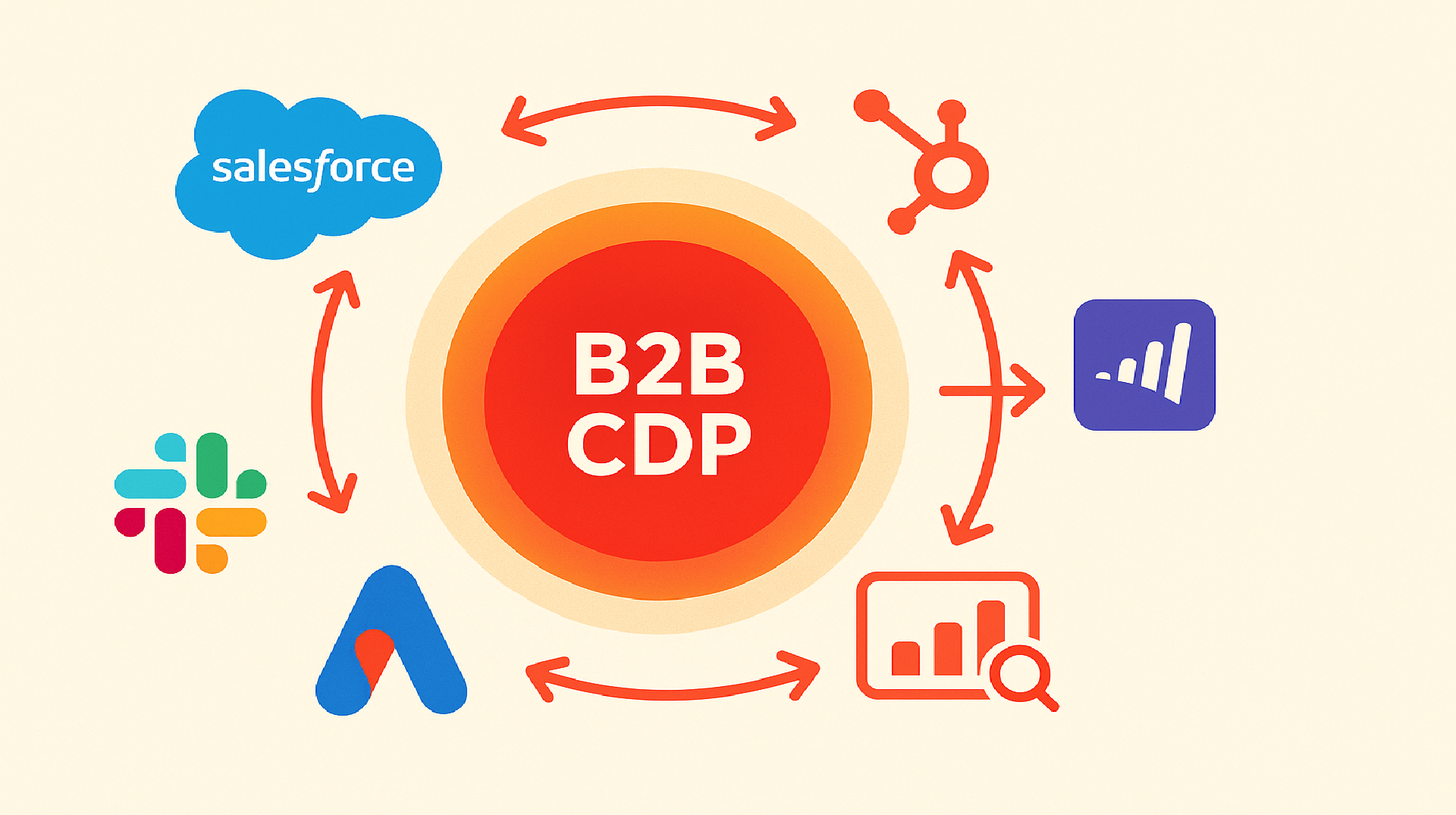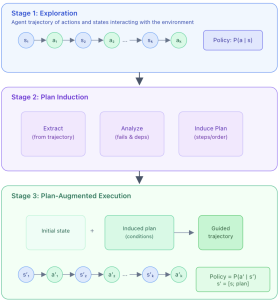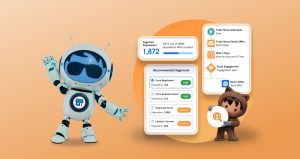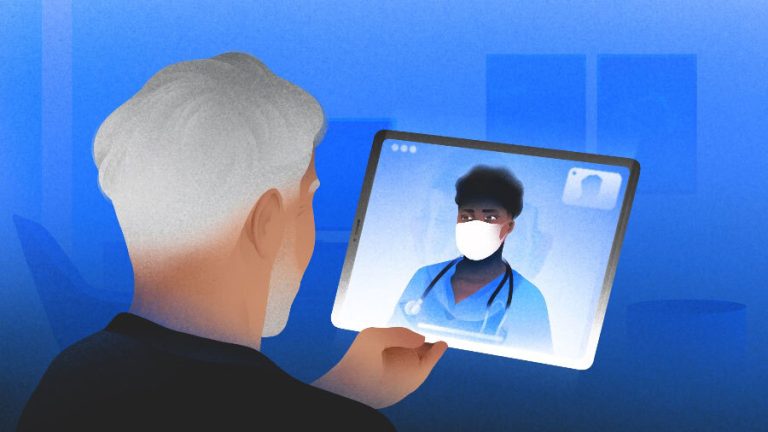
Customer data platforms (CDPs), long associated with B2C brands, are becoming essential to the B2B martech stack. Industry analysts now recognize B2B CDPs as an emerging category — with dedicated Forrester and Gartner reports underscoring their growing relevance.
For B2B organizations, the need is clear. Long sales cycles, complex buying groups and fragmented data make it difficult to connect the dots across marketing and sales. A scalable data foundation can help — one that enhances, rather than replaces, data from existing systems, such as customer relationship management and marketing automation platforms.
When used effectively, a B2B CDP turns that foundation into a growth engine. It helps teams activate the data they already have, uncover deeper insights and align around shared revenue goals. Here are five ways a B2B CDP helps organizations overcome these challenges.
1. Break down data silos
B2B CDPs eliminate data silos between marketing and sales by unifying information from CRM systems, marketing automation platforms and other enterprise data sources through prebuilt integrations and APIs.
This unified view creates ready-to-activate profiles at the account, person and buying group levels that feed into downstream marketing and sales systems. Sales teams gain visibility into the full scope of marketing engagement, while marketing teams see sales interactions, pipeline progress and deal outcomes.
Dig deeper: 12 ways to use a customer data platform
2. Understand complex buyer journeys
By normalizing interactions at the person, account and buying group levels, B2B CDPs uncover journey insights that single-purpose tools often miss. They help analyze the shift from anonymous to known visitors on your website and reveal engagement patterns among hot leads once identified.
A B2B CDP shows:
- Which buying group members are most engaged.
- What content resonates with different roles.
- How engagement evolves across the group over time.
Instead of treating each lead as an isolated opportunity, it enables a coordinated, context-aware outreach strategy that speaks to every participant in the buying group.
3. Unlock omnichannel orchestration
Because B2B CDPs integrate with key data sources and activation channels, they allow established profiles to be used consistently across all campaigns and touchpoints. This removes the need for fragmented, point-to-point integrations and centralizes audience creation and governance in one place.
Data and audiences that once flowed directly between systems — such as from a CRM to a marketing automation platform — are now enriched and enhanced as they pass through the B2B CDP.
This streamlined architecture reduces complexity, minimizes errors from redundant data transfers and accelerates time to activation. More importantly, it enables actual omnichannel orchestration, where marketing, sales and customer support teams all work from the same version of every audience and data point.
In many ways, the B2B CDP is the technical catalyst that finally allows organizations to execute complex go-to-market strategies.
Dig deeper: How CDPs fit within a B2B marketing strategy
4. Up-level the attribution model
With long and complex sales cycles, B2B organizations need a stronger foundation for measuring impact. A B2B CDP provides that foundation — consolidating all signals and interactions in one place to support advanced attribution models.
By unifying engagement data, teams can move beyond basic attribution and understand which combinations of touchpoints and channels drive the best results. Digital engagement signals, webinar attendance and sales interactions can all be incorporated into a comprehensive framework that shows which activities truly influence outcomes.
Use cases include identifying:
- Which campaigns impact deals.
- How contacts contribute to consensus within buying groups.
- Which actions help close opportunities faster.
This visibility helps marketing teams optimize spend and enables sales leaders to coach teams on the most effective engagement tactics.
While a B2B CDP supplies the data backbone for attribution, many organizations still rely on dedicated attribution platforms for statistical modeling and analysis, as this capability isn’t yet consistent across all CDP solutions.
5. Operationalize propensity scoring
By incorporating propensity scores from data science teams, a B2B CDP empowers marketers to translate predictive insights into actionable outcomes. These scores can be used to build targeted audiences and campaigns based on the likelihood of specific outcomes.
Marketing teams can segment audiences by propensity thresholds, trigger automated workflows when scores reach certain levels and personalize messaging accordingly. Sales teams can prioritize outreach to high-propensity accounts and adjust their cadence to match buying intent.
Because both teams use the same propensity data, alignment strengthens and confusion decreases — everyone operates from one shared set of metrics.
Common use cases include:
- Propensity to convert: Accounts most likely to close.
- Propensity to churn: At-risk accounts expected to cancel or not renew.
- Cross/upsell: Identifying opportunities within existing accounts.
Dig deeper: How B2B marketers can activate first-party data in their CDP
Building a data foundation for growth
B2B customer data platforms are essential for unifying fragmented information across CRMs, marketing automation platforms and other martech systems. By breaking down silos between marketing and sales, they enable omnichannel orchestration, reveal buyer journey insights, support advanced attribution and activate propensity scoring.
Together, these capabilities help B2B organizations turn existing data into coordinated marketing and sales strategies aligned with shared revenue goals.
Before investing in a B2B CDP, define your use cases, map integration requirements and clean up data sources. A strong foundation is key — data quality issues flow downstream and can limit the value of even the most advanced platform.
The post 5 ways a B2B CDP transforms your marketing and sales alignment appeared first on MarTech.



















